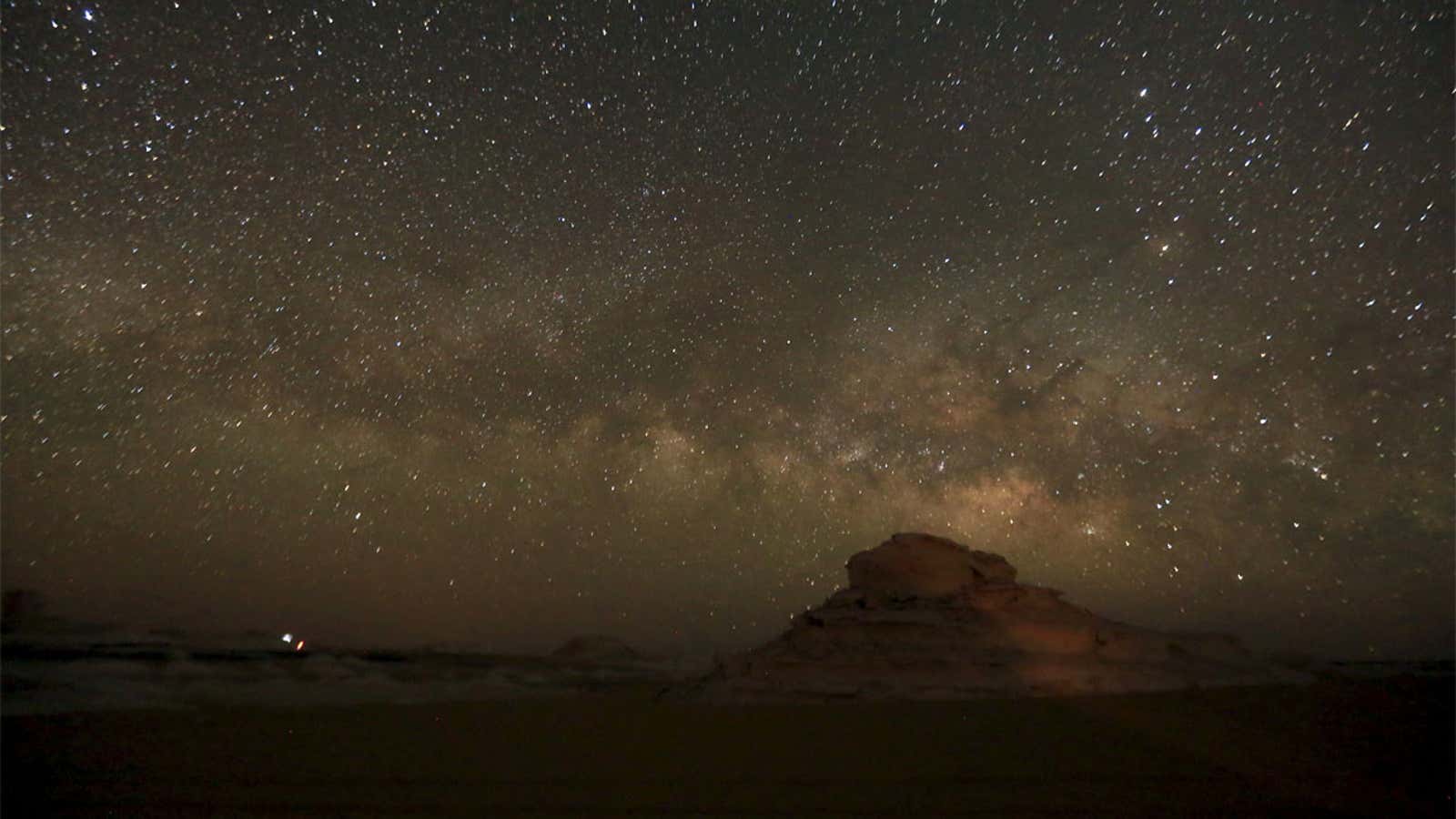In space, no one can hear you scream. But maybe they could if you were as loud as the collision of two heavenly bodies, each with a mass that’s 10-20% greater than that of our own Sun.
Two of the Laser Interferometer Gravitational-Wave Observatories, or LIGO teams, whose founders won the Nobel prize earlier this month, have detected a series of gravitational waves that had rippled across the universe when two neutron stars collided with each other in an event known as a kilonova. And they were able to capture the sounds of the collision.
(Gravity waves are distortions of space-time, and not sounds per se, but luckily these vibration resonate at audible frequencies. So, by converting the measurements to soundwaves, LIGO scientists can “listen” to the universe. This most recent observation is far longer than any previously observed gravitational event making for some interesting ear candy.)
In the clip below, the kilonova is the last line.
Researchers at LIGO acted as kind of an early-warning system, “hearing” the sound of the two stars approaching each other leading up to their collision. LIGO was able to notify traditional observatories to train their various telescopes on the event. As the facility only first detected gravity waves of any kind in the fall of 2015, this is a first-of-it’s-kind collaboration between gravitational and traditional light observations of the universe.
As Quartz’s Akshat Rathi notes:
Neutron stars are some of the smallest, densest stars we know. They do not have much more mass than our sun, but all of it is compressed into a ball no bigger than the width of a mid-sized city (about 15 km, or 9 miles). That’s a lot of compression. A teaspoon of neutron star would weigh 10 billion kg (or 22 billion lbs)—about the same as 1 million very large elephants.
Because of the vast distances in space, the effects of the collision—which took place in a galaxy called NGC 4993 situated in the middle of the Hydra constellation—took 130 million years to reach us. As such, we are listening to an event that actually took place somewhere in the middle of the period of time when dinosaurs still roamed the Earth.
Though scientists are still sorting through the information, we’re already benefitting from the event; we may finally know where all the elements of the periodic table get made.
